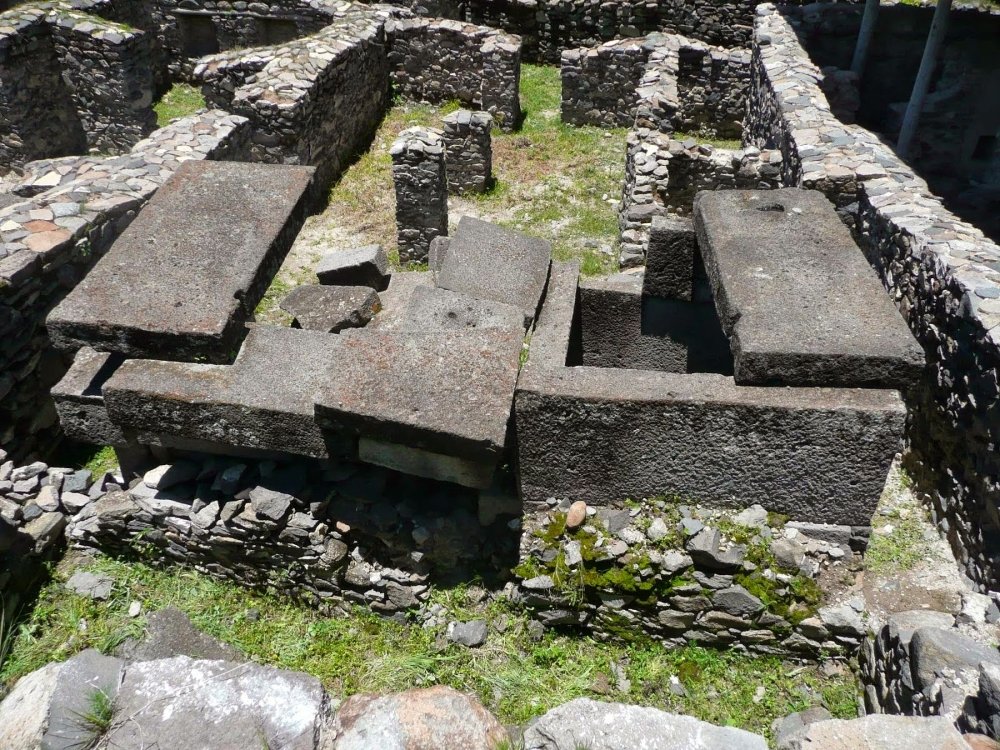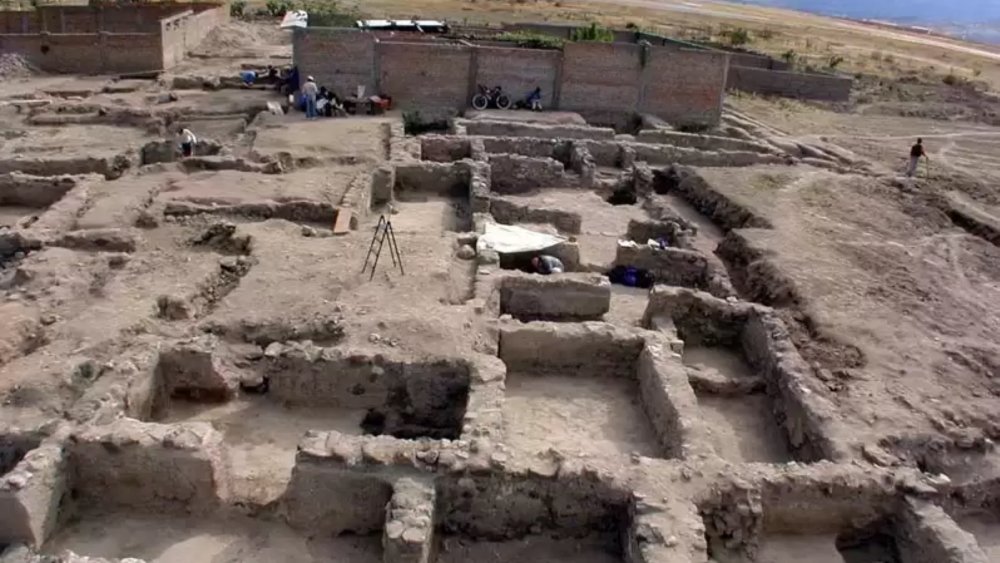Archaeological complex of Conchopata | Ayacucho
The meaning of “Conchopata” is not entirely clear and can vary depending on interpretation. However, “Concho” in Quechua can refer to a raised place or a hill, while “pata” can mean “place” or “sector”. Therefore, some suggest that “Conchopata” could be interpreted as “elevated place” or “sacred hill”. However, it’s important to note that this is just one possible interpretation and the exact meaning may be subject to debate.
The Archaeological Complex of Conchopata is located near the city of Ayacucho, in the central region of the Peruvian Andes. More specifically, it is situated approximately 2.5 kilometers south of the city of Ayacucho. This strategic location makes it accessible for visitors who wish to explore this important archaeological site.
History of Archaeological complex of Conchopata | Ayacucho
The history of the Conchopata Archaeological Complex is closely linked to the Huari civilization, also known as Wari, which flourished in the central Andes of Peru between 500 and 1000 AD. Here’s a summary of its history:
- Huari Origins
The Huari culture developed as a complex and highly organized society in the central region of the Peruvian Andes. Conchopata was one of the most important sites of this culture and served as an administrative, religious, and ceremonial center during the height of the Huari Empire.
- Advanced Urban Planning
The Conchopata Complex shows evidence of advanced urban planning, with a variety of architectural structures including platforms, retaining walls, courtyards, and irrigation canals. These structures suggest a high degree of social organization and sophisticated hydraulic engineering.
-
Strategic Importance
Conchopata occupied a strategic position in the surrounding landscape, allowing it to control and oversee important trade routes and agricultural areas. This contributed to its importance as an administrative and political center in the region.
- Decline and Abandonment
Although the Huari Empire reached its peak around 800 AD, it eventually began to decline due to a combination of factors including internal conflicts, climatic changes, and external pressures. With the decline of the Huari Empire, sites like Conchopata were abandoned and fell into disuse.
- Rediscovery and Excavations
Over time, Conchopata was forgotten and became buried under layers of soil and vegetation. However, in the 20th century, the site was rediscovered by archaeologists, who conducted excavations to study and preserve its ruins. These excavations have provided valuable insights into Huari culture and its legacy in the region.
In summary, the Conchopata Archaeological Complex is an important testament to the legacy of the Huari culture in the central Andes of Peru. Its history reflects the complexity and sophistication of this ancient civilization, as well as the challenges and changes it faced over time.
What to see in the conchopata Archaeological Complex?
At the Conchopata Archaeological Complex, visitors can explore a variety of structures and features that offer a fascinating insight into the Huari civilization and its legacy. Here are some things to see in the archaeological complex:
- Platforms and retaining walls: The complex features a series of platforms and retaining walls built by the Huari culture. These structures showcase the advanced urban planning and sophisticated civil engineering of the Huari civilization.
- Courtyards and ceremonial spaces: In addition to architectural structures, Conchopata also boasts courtyards and open spaces that were likely used for religious ceremonies and rituals by the Huari culture.
- Irrigation channels and hydraulic systems: Visitors can observe ancient irrigation channels and hydraulic systems that the Huari constructed to manage water and support agriculture in the region.
- Artifacts and ceramics: During archaeological excavations at Conchopata, numerous artifacts including ceramics, textiles, and tools have been found. These artifacts provide invaluable insights into daily life, technology, and culture of the Huari civilization.
- Panoramic views: From the archaeological complex, visitors can enjoy stunning panoramic views of the surrounding landscape, including the mountains and valleys of the Peruvian Andes.
- Interpretation and museum: Some archaeological complexes have interpretation centers or museums where visitors can learn more about the history and culture of the Huari civilization, as well as about the archaeological excavations conducted at the site.
Exploring the Conchopata Archaeological Complex is an enriching experience that offers a unique glimpse into the ancient history of the Peruvian Andes and the sophisticated Huari civilization.

How to get to the archaeological complex of Conchopata?
To get to the Conchopata Archaeological Complex, you can follow these steps:
- Travel to Ayacucho: Ayacucho is the nearest city to the archaeological complex and serves as the starting point to reach there. You can reach Ayacucho by plane from Lima or other major cities in Peru, or by bus from various cities across the country.
- Transportation from Ayacucho to Conchopata: Once in Ayacucho, you can take a taxi or a bus to the archaeological complex. Local buses or colectivos might be an economical option to get to the area. You may need to inquire at the bus station or in the city center about buses heading to Conchopata.
- Hiking or local transportation from the city: Depending on the distance from Ayacucho to the Conchopata Archaeological Complex, you may be able to hike there or you may need to take a taxi or a mototaxi from the city to the archaeological site.
- Hire a tour: Another option is to join an organized tour that includes a visit to the Conchopata Archaeological Complex. Many travel agencies in Ayacucho offer guided excursions to archaeological sites in the region, which can be convenient if you prefer not to worry about transportation and logistics on your own.
It’s important to note that Conchopata is located in a remote area of the Peruvian Andes and access may be limited. It’s advisable to check the availability of transportation and plan ahead before traveling to the archaeological complex.
Recommendations for visiting Conchopata
Here are some recommendations for visiting Conchopata:
- Research in Advance: Before your visit, research about Conchopata to understand its significance, history, and any guidelines or regulations for visitors.
- Wear Appropriate Clothing and Footwear: Conchopata may involve walking on uneven terrain, so wear comfortable shoes suitable for walking. Additionally, bring layers of clothing as weather conditions can vary, including sunscreen and a hat for sun protection.
- Stay Hydrated and Bring Snacks: Bring plenty of water to stay hydrated, especially if you plan to explore the area for an extended period. Packing some snacks can also be helpful for energy during your visit.
- Respect the Site: Conchopata is an archaeological site with historical significance, so be respectful of the ruins and artifacts. Follow any posted signs and guidelines, and avoid touching or climbing on the structures.
- Take Precautions for Altitude: Ayacucho, where Conchopata is located, is at a high altitude. If you’re not accustomed to high altitudes, take it easy and allow time for acclimatization. If you experience altitude sickness symptoms like headaches or dizziness, take a break and drink plenty of water.
- Plan for Transportation: Arrange transportation to and from Conchopata in advance. Whether you’re taking a bus, taxi, or joining a guided tour, make sure you have transportation arrangements sorted out to avoid any complications.
- Consider Hiring a Guide: Hiring a local guide can enhance your experience by providing insights into the history and significance of Conchopata. Guides can offer valuable information about the archaeological site and its cultural context.
- Leave No Trace: Practice Leave No Trace principles by taking any trash or belongings with you when you leave. Help preserve Conchopata for future visitors to enjoy.
By following these recommendations, you can have an enjoyable and meaningful visit to Conchopata while respecting its cultural and historical significance.












